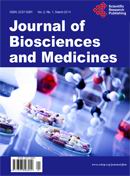A few snippets from another somewhat related study.
The author of the present manuscript maintained a daily Excel spreadsheet for case numbers and mortality rate of COVID-19 infection in New York City, from March 27 to April 26, 2020. As Table 1 shows, the mortality rate just prior to the month of April, specifically on March 27, 2020, at which time the Department of Health reported a total of 23,112 cases, was between 1% - 2%. This would be the expected rate for any flu-like illness, and comparable to the COVID-19 mortality rate on the Diamond Princess Cruise ship [1], the latter of which might perhaps be the closest we shall get to a proper “laboratory” for studying the behavior of this virus in a closed system. The New York City mortality rate, however, immediately began increasing thereafter, so that by the end of the month of April, there had been a total of only four dates in which the daily mortality rate had not been higher than the day before. The author ceased maintaining the spreadsheet after the month of April, but a follow up entry, on June 9, reveals that the mortality rate had continued to increase during the month of May, peaking at about 11%.
It thus appears that the mortality rate of this disease is inextricably-linked to the case numbers. One might expect a great deal of discussion about this rather remarkable phenomenon, but the author is not aware of such discussion in any reputable medical/scientific journal, or in the news media. The author has therefore undertaken a review of the April 2020 mortality statistics, and a consideration of the possible interpretation thereof.
In the United States, public health records show plainly and openly that the death tolls in previous years, from all these “other” respiratory diseases combined, regularly and reliably add up to some number between 100,000 - 200,000. This year, however, if we are to take the absence of reporting as “evidence”, then we might be compelled to believe that there were actually no deaths from any of these “other” diseases. It is neither reasonable nor rational to believe such a thing, but at this point we shall never know the exact numbers of 2020 deaths from these “other” respiratory diseases, because they were not tested for.
The important question is a statistical one: When people arrive at the emergency room coughing, what is the effect of presuming that they all have COVID-19, when such a diagnosis is based upon the current test?
We know now that the test has a 50% - 100% false-positive rate. It hardly matters whether it is 50% or 100%; the test is not accurate. As stated previously, the author shall, for the sake of argument, accept the Annals of Internal Medicine (reference [2] ) overall false-positive rate of 74% to be the correct number, admitting without protest that it might be as low as 50%, because the argument the author shall make is primarily qualitative.
The author of the present manuscript maintained a daily Excel spreadsheet for case numbers and mortality rate of COVID-19 infection in New York City, from March 27 to April 26, 2020. As Table 1 shows, the mortality rate just prior to the month of April, specifically on March 27, 2020, at which time the Department of Health reported a total of 23,112 cases, was between 1% - 2%. This would be the expected rate for any flu-like illness, and comparable to the COVID-19 mortality rate on the Diamond Princess Cruise ship [1], the latter of which might perhaps be the closest we shall get to a proper “laboratory” for studying the behavior of this virus in a closed system. The New York City mortality rate, however, immediately began increasing thereafter, so that by the end of the month of April, there had been a total of only four dates in which the daily mortality rate had not been higher than the day before. The author ceased maintaining the spreadsheet after the month of April, but a follow up entry, on June 9, reveals that the mortality rate had continued to increase during the month of May, peaking at about 11%.
It thus appears that the mortality rate of this disease is inextricably-linked to the case numbers. One might expect a great deal of discussion about this rather remarkable phenomenon, but the author is not aware of such discussion in any reputable medical/scientific journal, or in the news media. The author has therefore undertaken a review of the April 2020 mortality statistics, and a consideration of the possible interpretation thereof.
In the United States, public health records show plainly and openly that the death tolls in previous years, from all these “other” respiratory diseases combined, regularly and reliably add up to some number between 100,000 - 200,000. This year, however, if we are to take the absence of reporting as “evidence”, then we might be compelled to believe that there were actually no deaths from any of these “other” diseases. It is neither reasonable nor rational to believe such a thing, but at this point we shall never know the exact numbers of 2020 deaths from these “other” respiratory diseases, because they were not tested for.
The important question is a statistical one: When people arrive at the emergency room coughing, what is the effect of presuming that they all have COVID-19, when such a diagnosis is based upon the current test?
We know now that the test has a 50% - 100% false-positive rate. It hardly matters whether it is 50% or 100%; the test is not accurate. As stated previously, the author shall, for the sake of argument, accept the Annals of Internal Medicine (reference [2] ) overall false-positive rate of 74% to be the correct number, admitting without protest that it might be as low as 50%, because the argument the author shall make is primarily qualitative.




Comment